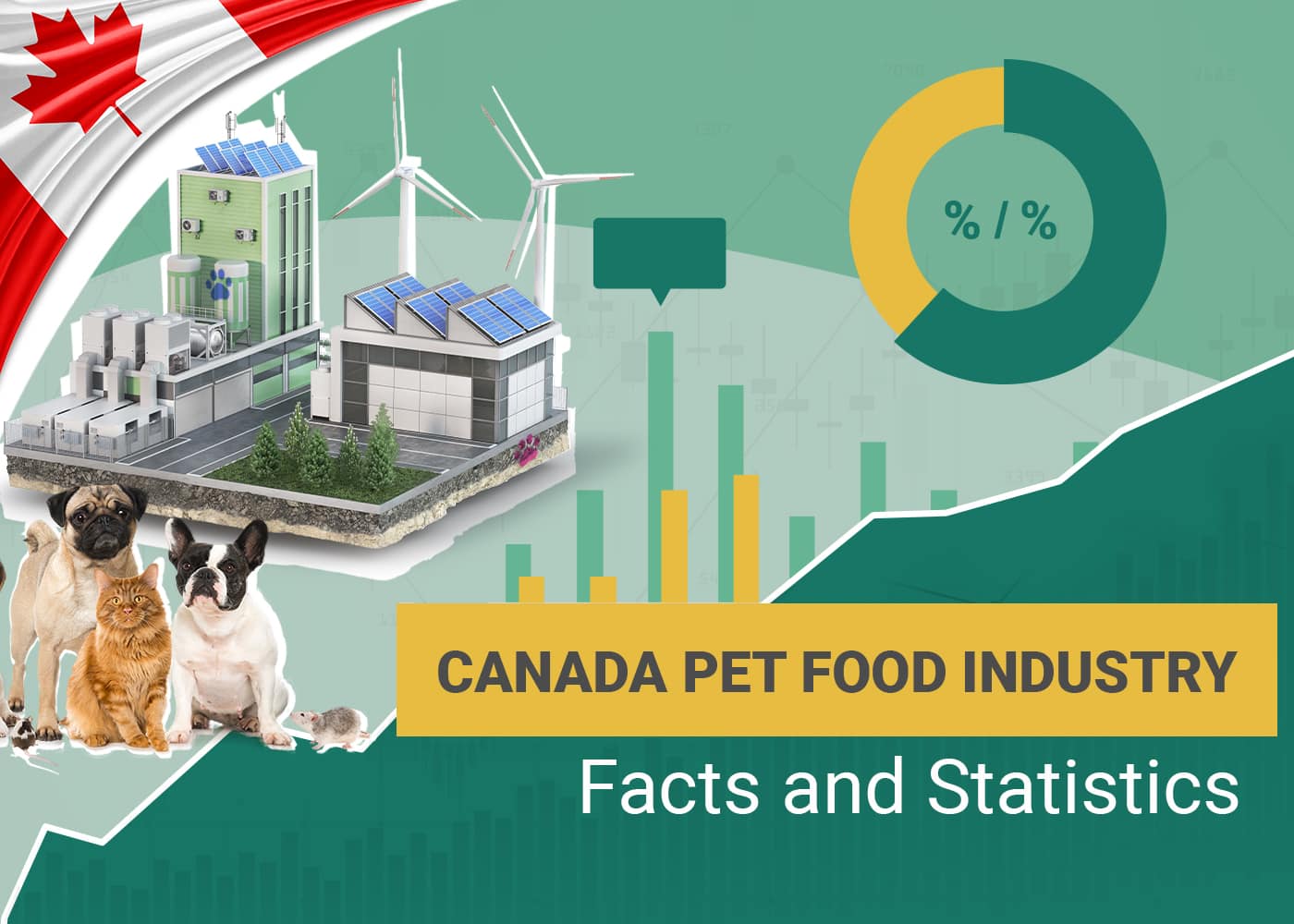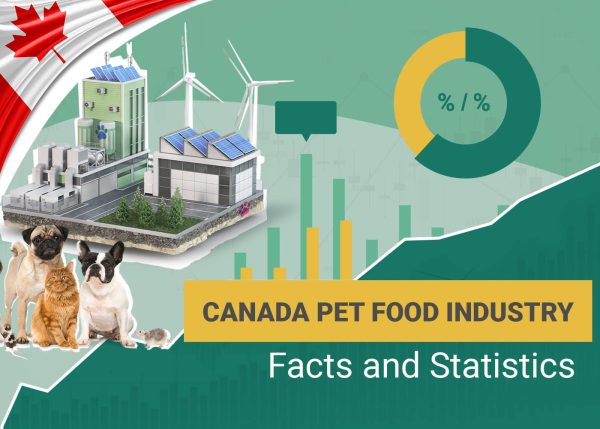Click to Skip Ahead
Note: This article’s statistics come from third-party sources and do not represent the opinions of this website.
Our pets are essential to us, and pet food is a crucial part of taking care of our furry friends. The number-one reason that we add a pet to our household is for companionship. They can help prevent loneliness and reduce anxiety, stress, and depression. They can even help you get more exercise!
We compiled statistics all about the pet food industry in Canada to provide you with important information. You can use it to satisfy your curiosity, or perhaps you’re interested in investing in the pet food market. Either way, we hope that this information helps you see where things stand in the industry and where they are potentially going
The 18 Pet Food Industry Statistics in Canada
- Retail sales of pet food have increased in the CAGR by 5.8% from 2016 to 2020.
- The CAGR is expected to further grow by another CAD$5.3 billion by 2025.
- Dog food is the largest pet food category at CAD$2.8 billion.
- The cat food category is the second largest at CAD$1.4 billion.
- Five of the largest pet food companies had 52% of the retail market share in Canada.
- Pedigree is the top-selling brand at CAD$260.8 million.
- The top-selling kind of dog food is dry dog food at CAD$2.1 billion.
- The second-largest category in retail is dog treats and mixers at CAD$499.6 million.
- Premium wet and dry dog food has a CAGR of 2.3%.
- Fish food is the largest category of pet food after cats and dogs at CAD$36.8 million.
- Shopping in retail stores has the highest shares at 76.6%.
- 1,025 new pet food products were launched in Canada between 2016 and 2020.
- Fish outnumber cats and dogs, with 8.5 million in Canada.
- Cats outnumber dogs in Canada at 8.2 million.
- Small dogs had the most significant increase in numbers at 3.3% from 2016 to 2020.
- Birds were the only pets that saw a decrease in numbers of 0.3% from 2016 to 2020.
- The annual cost of looking after a dog in Canada is CAD $3,724.
- The annual cost for caring for a cat in Canada is CAD $2,542.

Canada Pet Food Statistics
1. Retail sales of pet food have increased in the CAGR by 5.8% from 2016 to 2020.
(AAFC)
The compound annual growth rate (CAGR) went from CAD$3.4 million in 2016 to CAD$4.2 billion in 2020. The pet food market report of the Government of Canada’s Agriculture and Agri-Food Canada found that Canada’s pet population increased from 27.5 million in 2016 to 27.9 million in 2020 at a CAGR of 0.4%.
2. The CAGR is expected to further grow by another CAD$5.3 billion by 2025.
(AAFC)
Pet food industry analysis expects an increase in the CAGR of an additional 4.9% in the next 4 years in retail sales of pet food.
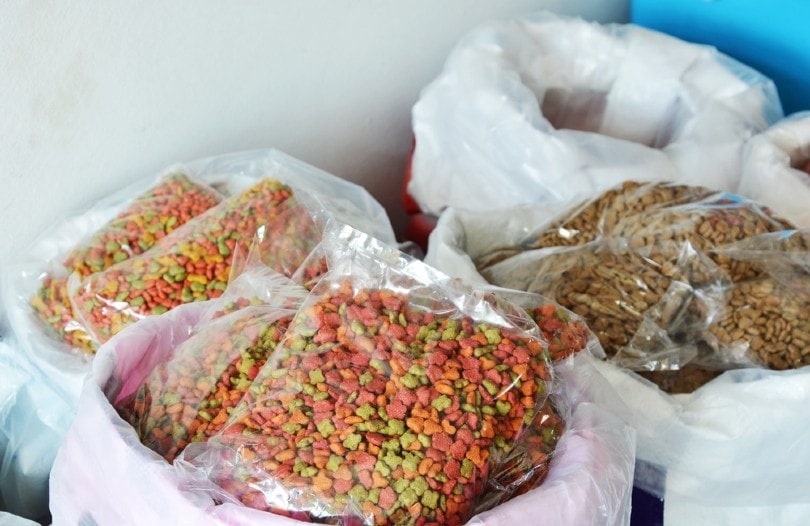
3. Dog food is the largest pet food category at CAD$2.8 billion.
(AAFC)
The dog food market shares stand at 65.4% in 2020, with retail sales at CAD$2.8 billion in 2020.
4. The cat food category is the second largest at CAD$1.4 billion.
(AAFC)
This gives a 32.7% market share in 2020, with retail sales in cat food of $CAD1.4 billion in 2020.
(AAFC)
The pet food market share has Nestlé on top with 17.8% of the market shares, Mars Inc. at 17.7%, Champion Petfoods at 6.2%, JM Smucker at 5.7%, and Petcurean Pet Foods with 4.6%. Interestingly, the company with the highest CAGR at 5.6% was the independent Petcurean, which is based out of British Columbia and has high-quality pet food.
6. Pedigree is the top-selling brand at CAD$260.8 million.
(AAFC)
Pedigree belongs to Mars Inc. and went from CAD$220.5 million in 2016 to CAD$260.8 million in 2020. However, Acana (from Champion Petfoods) had the most significant CAGR at 7.4%. Pedigree’s CAGR was 4.3% and comes behind the other 10 top brands.
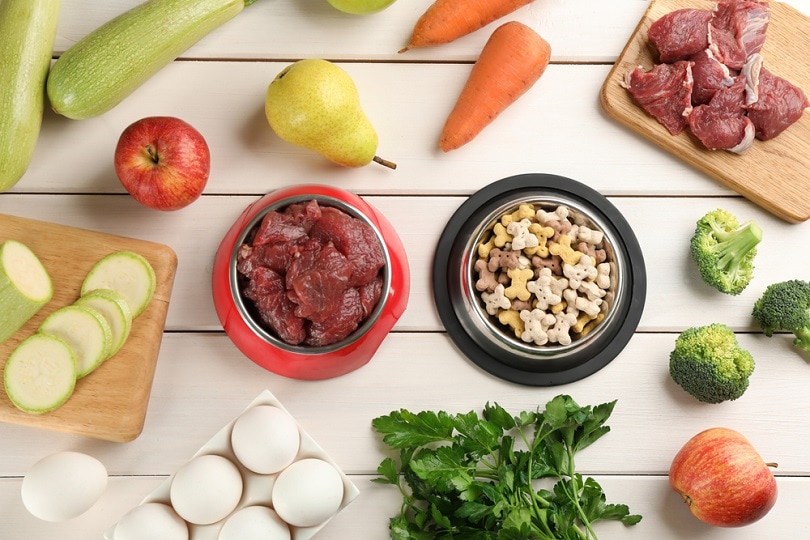
7. The top-selling kind of dog food is dry dog food at CAD$2.1 billion.
(AAFC)
Dry dog food was the highest-selling kind of dog food in retail in 2020. It represents a 74.8% market share and is projected to reach CAD$2.6 billion in sales by 2025.
8. The second-largest category in retail is dog treats and mixers at CAD$499.6 million.
(AAFC)
The increase in treats in particular has been stimulated through the number of pet owners spending more time at home with their pets because of the COVID-19 pandemic. It probably also accounts for extra training. The CAGR had an increase of 7.7% from 2016 to 2020 and is expected to rise another 5.7% by 2025.
9. Premium wet and dry dog food has a CAGR of 2.3%.
(AAFC)
With more pet owners staying at home and taking better care of their pets, they’re also taking the time to become more knowledgeable about premium food with high-quality ingredients. The demand for premium dog food had a CAGR of 4.9% in 2016 and 7.2% in 2020.
10. Fish food is the largest category of pet food after cats and dogs at CAD$36.8 million.
(AAFC)
Cats and dogs are still the most popular pets for most Canadians, but fish come in third. Fish are easier to purchase and look after, which might account for their popularity over birds, reptiles, and small mammals. There was an increase in the CAGR of 1.6%.
(AAFC)
While retail sales were the highest, e-commerce, or online shopping, is the only form of shopping that has had an increase in the CAGR at 30%. It was down everywhere else, including through grocery and pet stores. In 2016, the CAGR for online shopping was 7.6% and rose to 21.7% in 2020.

12. 1,025 new pet food products were launched in Canada between 2016 and 2020.
(AAFC)
The top new products that were released were dog treats, followed by canned dog food.
Pet Statistics
13. Fish outnumber cats and dogs, with 8.5 million in Canada.
(AAFC)
As of 2021, fish actually outnumber cats and dogs at 8.5 million. This was an increase of 0.1%.
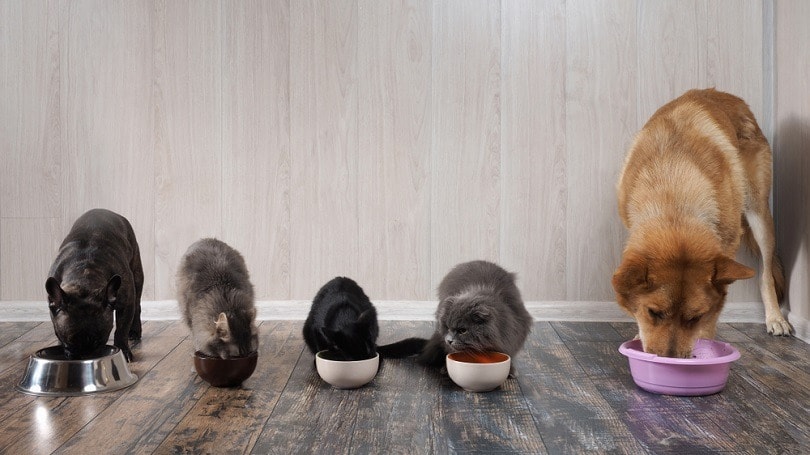
14. Cats outnumber dogs in Canada at 8.2 million.
(AAFC)
There are about 7.3 million dogs in comparison to the 8.2 million cats. There was an increase of 0.2% in cat ownership, but dogs saw an increase of 1.2%.
15. Small dogs had the most significant increase in numbers at 3.3% from 2016 to 2020.
(AAFC)
Small dogs are categorized as being up to 20 pounds. There were 1.7 million in 2016 and 2 million in 2020. It’s forecast that we will continue to see the largest number of small dogs through to 2025, with an increase of 2.4%. Medium-sized dogs came in second with an increase of 1.1%.
16. Birds were the only pets that saw a decrease in numbers of 0.3% from 2016 to 2020.
(AAFC)
All other pets had an increase, but pet birds went from 2.538 million in 2016 to 2.515 million in 2020. This trend in pet birds is expected to continue, with a forecast of 2.510 million in 2021 to 2.495 million in 2025, which means a decrease of 0.1%.
17. The annual cost of looking after a dog in Canada is CAD$3,724.
(Statista)
The highest expenses are food ($1,132), followed by pet insurance ($1,097) and dental cleaning ($652).

18. The annual cost for caring for a cat in Canada is CAD$2,542.
(Statista)
The highest expense for cats is dental cleaning ($652), followed by pet insurance ($595) and cat food ($544).
Frequently Asked Questions
How Big Is the Pet Population Expected to Grow?
As of 2021, the pet population in Canada is expected to grow from 28.1 million pets to 28.5 million by 2025. This dramatic increase is due to people seeking companionship during the COVID-19 pandemic. (AAFC)
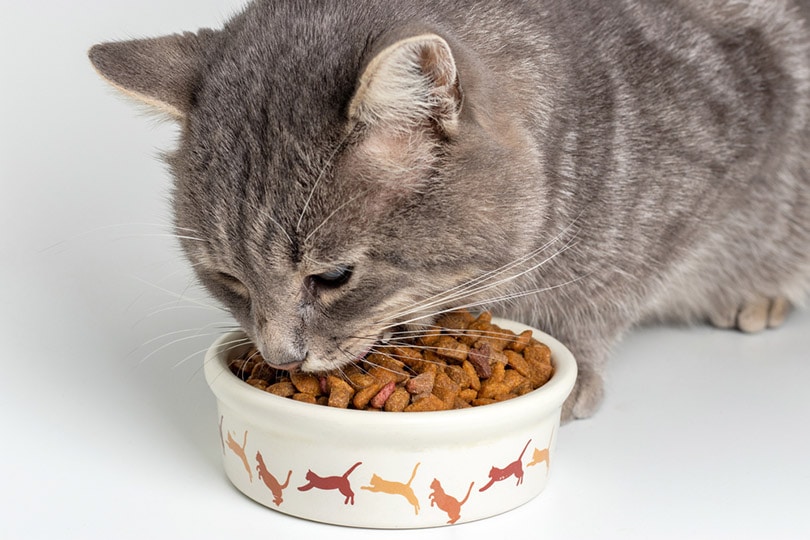
Has the COVID-19 Pandemic Impacted Spending?
Even with people losing jobs and working from home, there has been an increase in the expenditures of pet care sales. Concerns for people’s mental health during social isolation have definitely contributed to a rise in pet adoptions. This also includes people spending more on high-quality food and pet accessories like clothing and toys. (AAFC)
What Country Is the Top Pet Food Importer to Canada?
It should come as no surprise that the honor goes to the United States. The U.S. imported CAD$1.1 billion in pet food into Canada at a 91.5% market share. Italy had the highest CAGR at 128.6%! (AAFC)
How About Canada Exporting Pet Food?
Overall, Canada exported CAD$1.1 billion worth of pet food to the global market. The U.S. was the largest at CAD$399 million, but China had the most considerable increase in the CAGR at 181.8%! This is in comparison to 4.1% with the U.S. (AAFC)
What Provinces Exported the Most Pet Food?
Ontario exported the most at CAD$522.5 million, with Alberta in second at CAD$298.5 million and British Columbia in third at CAD$119.6 million. However, B.C. had the biggest increase in CAGR at 38.2%. (AAFC)

What Province Has the Most Pet Stores?
Ontario has the highest number of stores as of 2020 with 756. In second is Quebec with 487, and third is British Columbia with 352 pet stores. (Statista)
Conclusion
As you can see, the pet food industry in Canada has grown and will continue to grow over the next few years. The numbers show us how important our pets are, particularly when we highlight the prevalence of premium food options. How we shop has also changed, as online shopping is driving the market. But physical pet stores are still important.
Most pet owners don’t mind paying extra if it ensures the continued health of their pets, and they are making themselves much more informed on the subject. Keeping our pets in good health will ensure that they will stay with us for a long period of time, which is exactly what we want.
Featured Image Credit: SatawatK, Shutterstock

